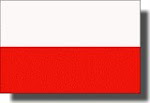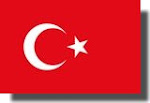http://hostelyellow.com/
See this address.
Monday 31 August 2009
Sunday 30 August 2009
Coordinators' meeting_2
It seems that the meeting can take place from 24 till 26 October 2009. Can everybody confirm her participation? I need to book a hotel for you. Have you found your flight to Cracow?
Monday 24 August 2009
October Meeting
At the end of October is good for us for the meeting in Krakow.
TURKEY
School Year 2009-2010
first semester 24.09.2009-22.01.2010 winter holidays 22.01.2010-08.02.2010 second semester 08.02.2010-18.06.2010
School Year 2010-11
first semester 13.09.2010-14.01.2011 winter holidays 14.01.2011-31.01.2011 second semester 31.01.2011-10.06.2011
TURKEY
School Year 2009-2010
first semester 24.09.2009-22.01.2010 winter holidays 22.01.2010-08.02.2010 second semester 08.02.2010-18.06.2010
School Year 2010-11
first semester 13.09.2010-14.01.2011 winter holidays 14.01.2011-31.01.2011 second semester 31.01.2011-10.06.2011
October meeting in Cracow
Hello! As we have autumn holiday here in the Czech Republic beginning Wednesday 28th October, the best dates for us would be the weekend - from Friday 23rd to Sunday 25th, or from Saturday 24th to Monday 26th. Or the previous weekend, if it is OK for others.
In my opinion we should meet as soon as possible. We start school Monday 1st September, I will know more then.
In my opinion we should meet as soon as possible. We start school Monday 1st September, I will know more then.
Thursday 20 August 2009
October meeting
Romania: the end of October is a good time for the meeting in Krakow.
Hungary: from 23 October to 31 October any time.
Poland: after 15 October
Czech rep: ?
Turkey: ?
Sweden: 25-27 October
Hungary: from 23 October to 31 October any time.
Poland: after 15 October
Czech rep: ?
Turkey: ?
Sweden: 25-27 October
Tuesday 18 August 2009
Monday 17 August 2009
Maria's album
http://picasaweb.google.com/lh/sredir?uname=anghelutamaria1&target=ALBUM&id=5366199574864769985&authkey=Gv1sRgCPWJ88v5_57AdQ&feat=email
Saturday 15 August 2009
Fruczak gołąbek
.jpg)
Fruczak gołąbek (Macroglossum stellatarum) - motyl z rodziny zawisakowatych (Sphingidae). Ćma ta lata w ciągu dnia.
Rozpiętość skrzydeł tego motyla wynosi ok. 5-7 cm. Zachowaniem przypomina kolibra, bo spija nektar z kielicha kwiatów za pomocą ssawki, unosząc się w powietrzu. Sylwetka ćmy jest krępa, lecz niewielkich rozmiarów. Jej skrzydła są szarobrązowe, pokryte czarnymi liniami, tylne zaś są pomarańczowe. Gąsienica jest zielona lub brązowa, zakończona niebieskim rogiem; żeruje na kwiatach przytulii.
Występowanie: Europa Środkowa i południowa, Afryka Północna, część Azji, występuje również w południowej Skandynawii.
Wikipedia: http://pl.wikipedia.org/wiki/Fruczak_go%C5%82%C4%85bek
The Hummingbird Hawk-moth (Macroglossum stellatarum) is a species of hawk moth with a long proboscis, and regularly hovers, making an audible humming noise. These two features make it look remarkably like a hummingbird when it feeds on flowers; it is theorised that this is a result of convergent evolution. It flies during the day, especially in bright sunshine, but also at dusk, dawn, and even in the rain, which is unusual for even diurnal hawkmoths. Its visual abilities have been much studied, and it has been shown to have a relatively good ability to learn colours.
The Hummingbird Hawk-moth is distributed throughout the northern Old World from Portugal to Japan, but is resident only in warmer climates (southern Europe, North Africa, and points east). It is strongly migratory and can be found virtually anywhere in the hemisphere in the summer. However it rarely survives the winter in northern latitudes (e.g. north of the Alps in Europe, north of the Caucasus in Russia).
Moths in the Hemaris genus of the family Sphingidae are known as "hummingbird moths" in the US, and "bee moths" in Europe, which sometimes causes confusion between this species and the North American genus.
European Oak





The village of Marklowice near Jastrzębie Zdrój built a playground with European Union grant. The playground seems to be Eden to little kids and the older ones. Besides typical recreational facilities, trees and shrubs were planted and each of them labeled with their names. An oak tree was planted to commemorate the friendship between Polish Marklowice and Czech Stonava. Flowers attract various insects. We were able to spot a Macroglossum Stellatarum. For a moment we believed that we were observing a hummingbird. Unfortunately there are no hummingbirds in Poland.
Subscribe to:
Posts (Atom)








